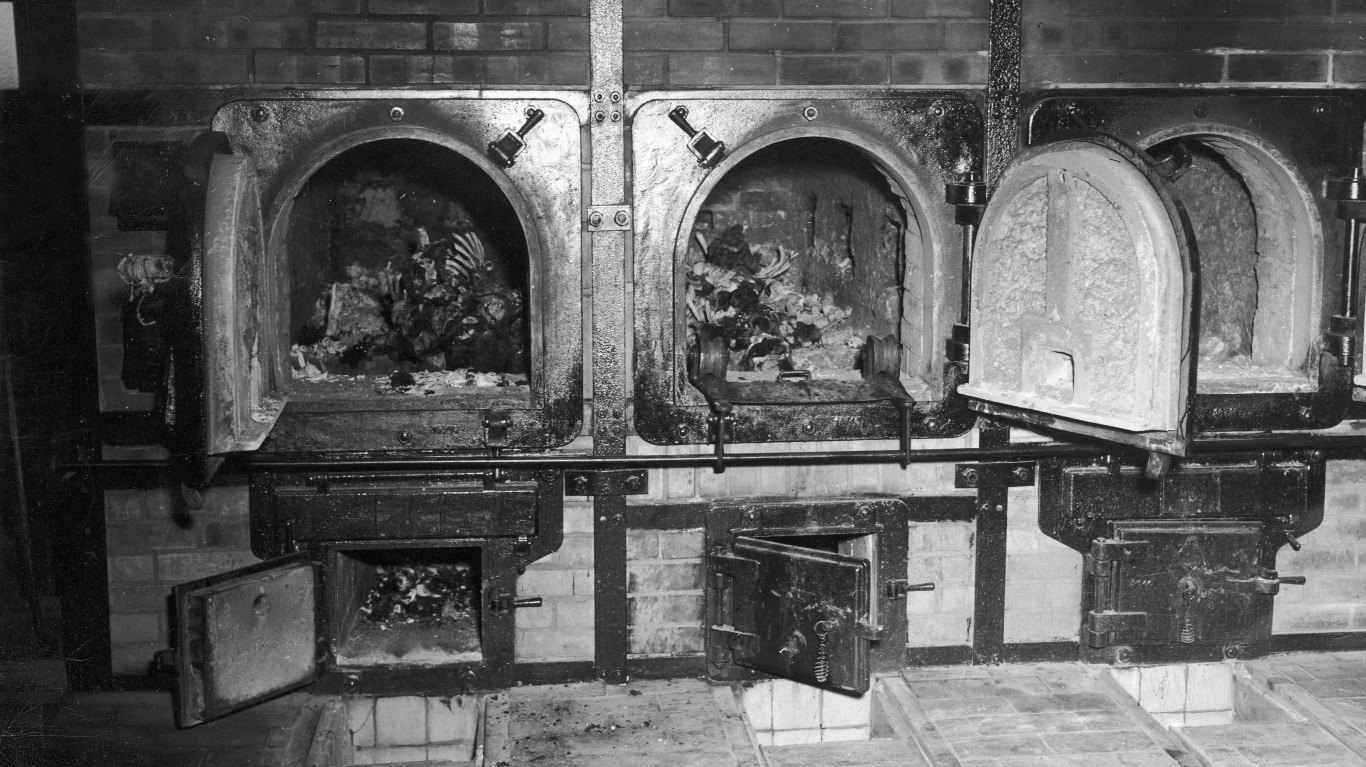
The disturbing photos of Nazi death camps bring the horrific inhumanity of the Holocaust into sharp focus.
While names like Auschwitz and Buchenwald are infamous, the Nazis established over 44,000 incarceration and extermination sites between 1933-1945. Some were extermination camps designed to kill prisoners, mainly Jews, as efficiently as possible. (These are 20 horrifying images of Auschwitz.)
Others were concentration camps where inmates including Jews, homosexuals, Roma people, and political prisoners were worked or starved to death or subjected to lethal experiments. (Here are 30 symbols used by the Nazis to mark their victims.)
Whatever euphemisms the Nazis used, these camps exemplified the depths of evil to which humanity can sink. Viewing images of the torture, starvation, and slaughter that occurred in them serves as a stark reminder that we must remain vigilant to prevent such atrocities from ever happening again.
With that in mind, 24/7 Tempo reviewed historical photo archives from sources including from Getty Images, Picryl, Wikimedia, and the Library of Congress to compile a list of horrifying images of Nazi death camps.
Click here to see horrifying images of Nazi death camps

1. Wobbelin concentration camp
A German gravedigger burying victims from Wobbelin concentration camp near Ludwigslust, Germany, after the camp’s liberation in early May 1945.
[in-text-ad]

2. Female prisoners at Birkenau
Female prisoners at Auschwitz II-Birkenau in Poland in 1944.
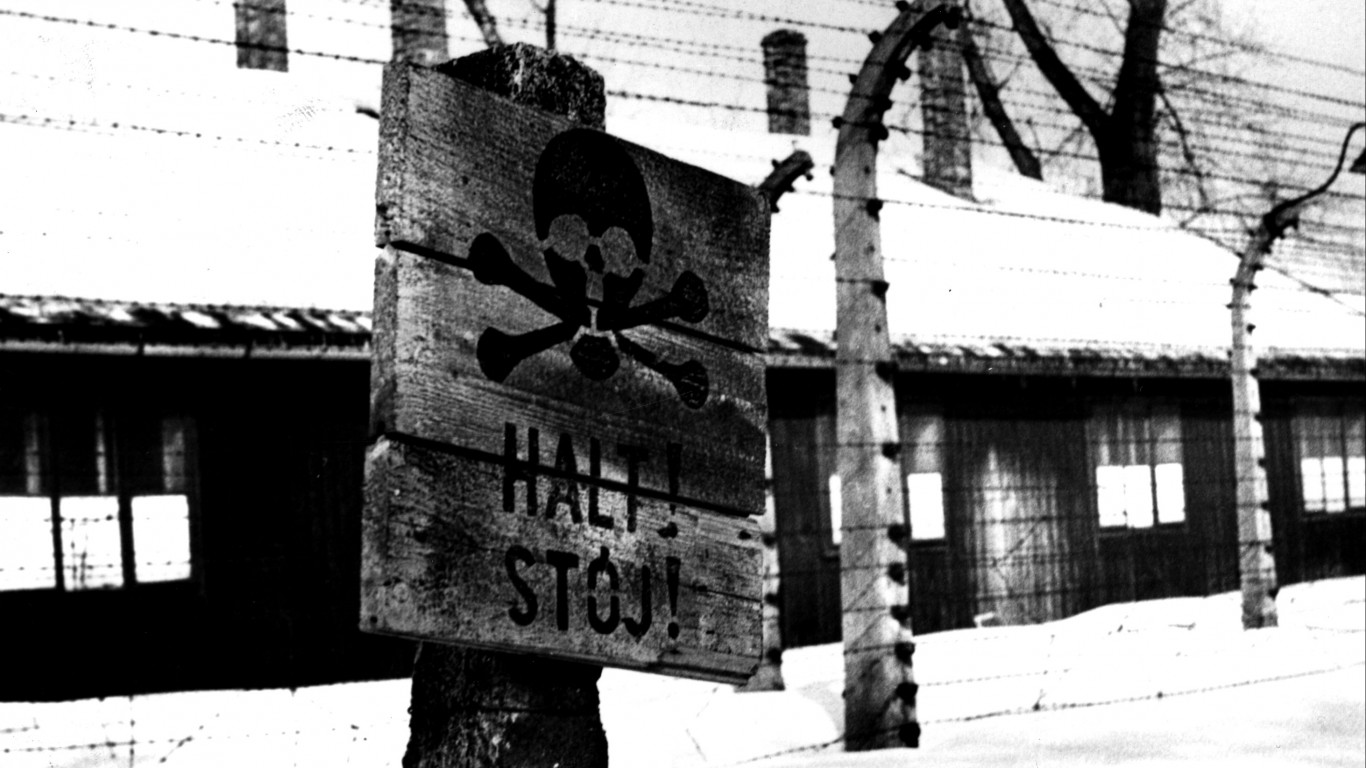
3. Concentration camp sign
A sign outside Auschwitz reading “Halt!” in German and Polish, warning people to stay away from the camp.
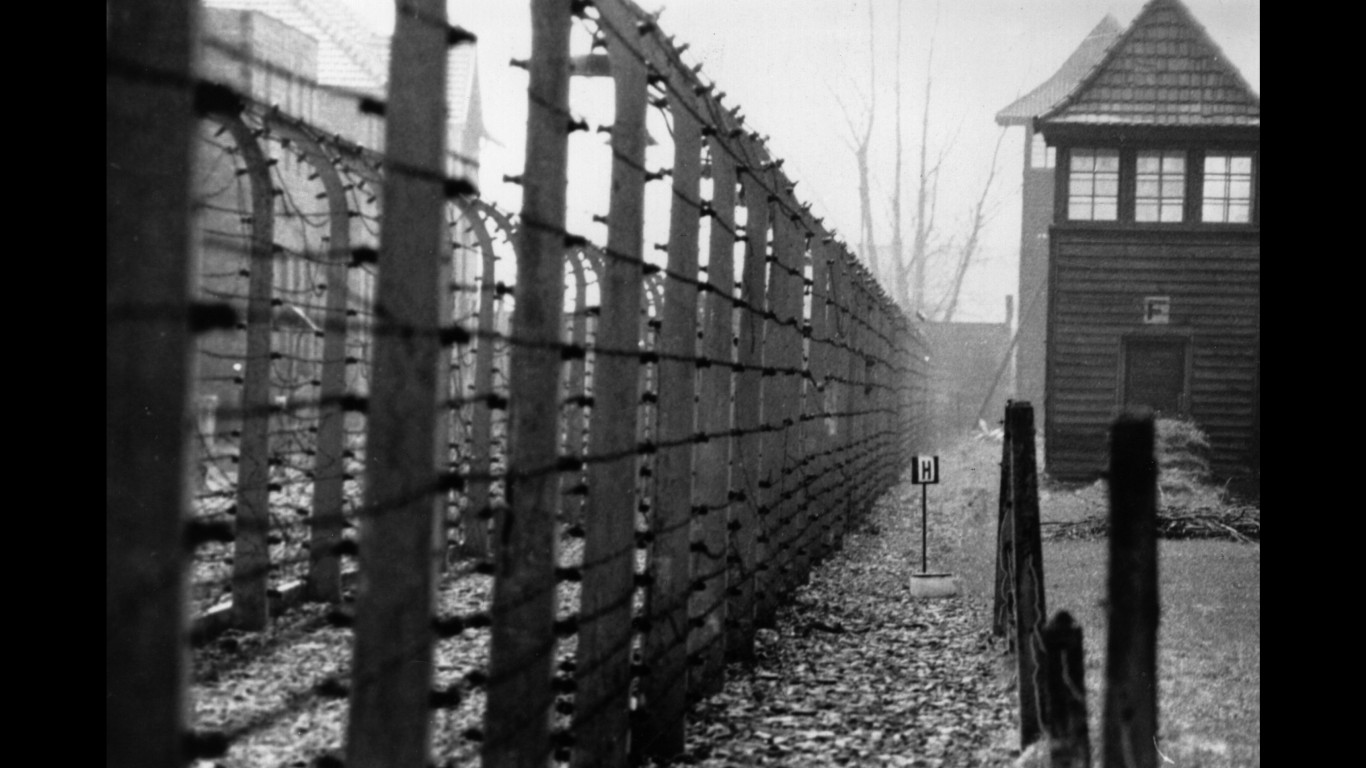
4. Auschwitz
The perimeter fence of Auschwitz.
[in-text-ad-2]

5. Sobibor, a death camp in Poland
The Sobibor extermination camp in Poland in summer 1943, where at least 167,000 people were killed between April 1942 and mid-October 1943.
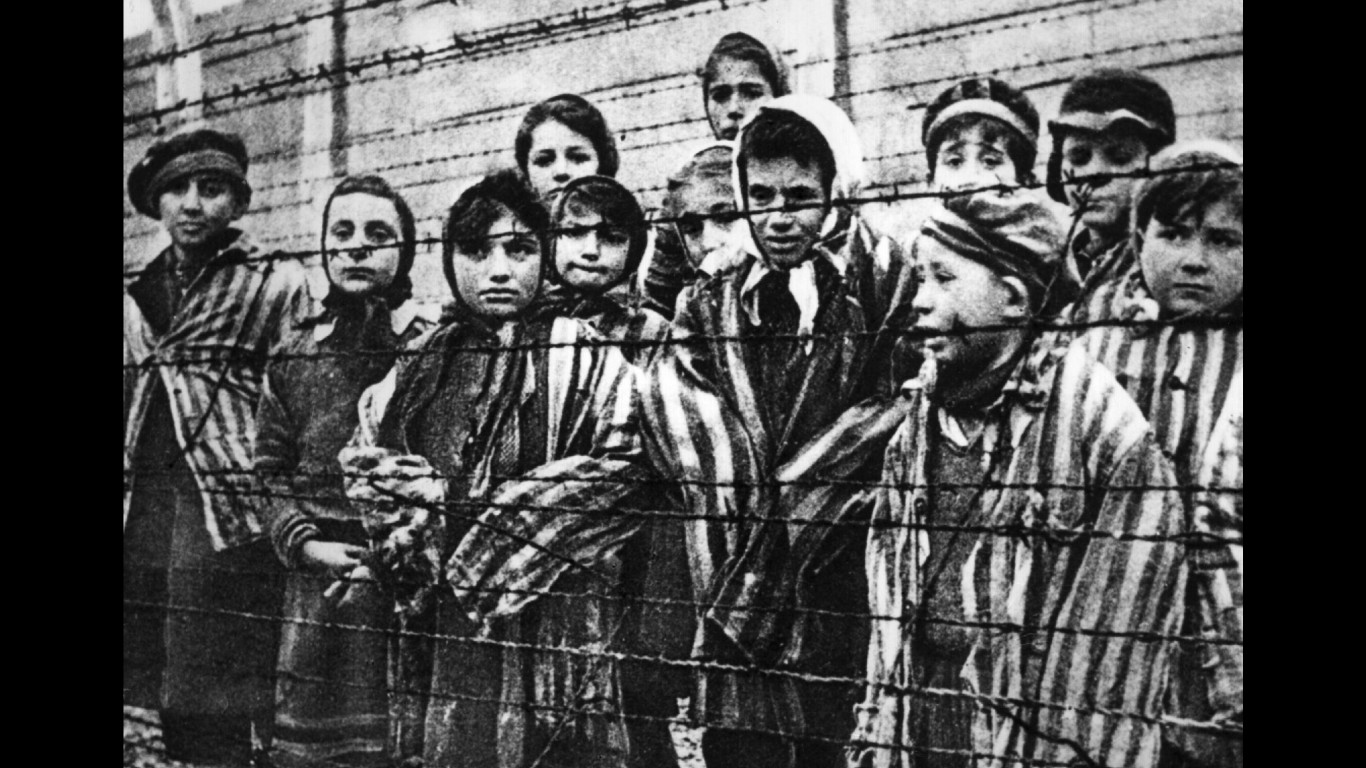
6. Child Survivors Of Auschwitz
A group of children who survived the camp are photographed upon its liberation by the Red Army in 1945.
[in-text-ad]
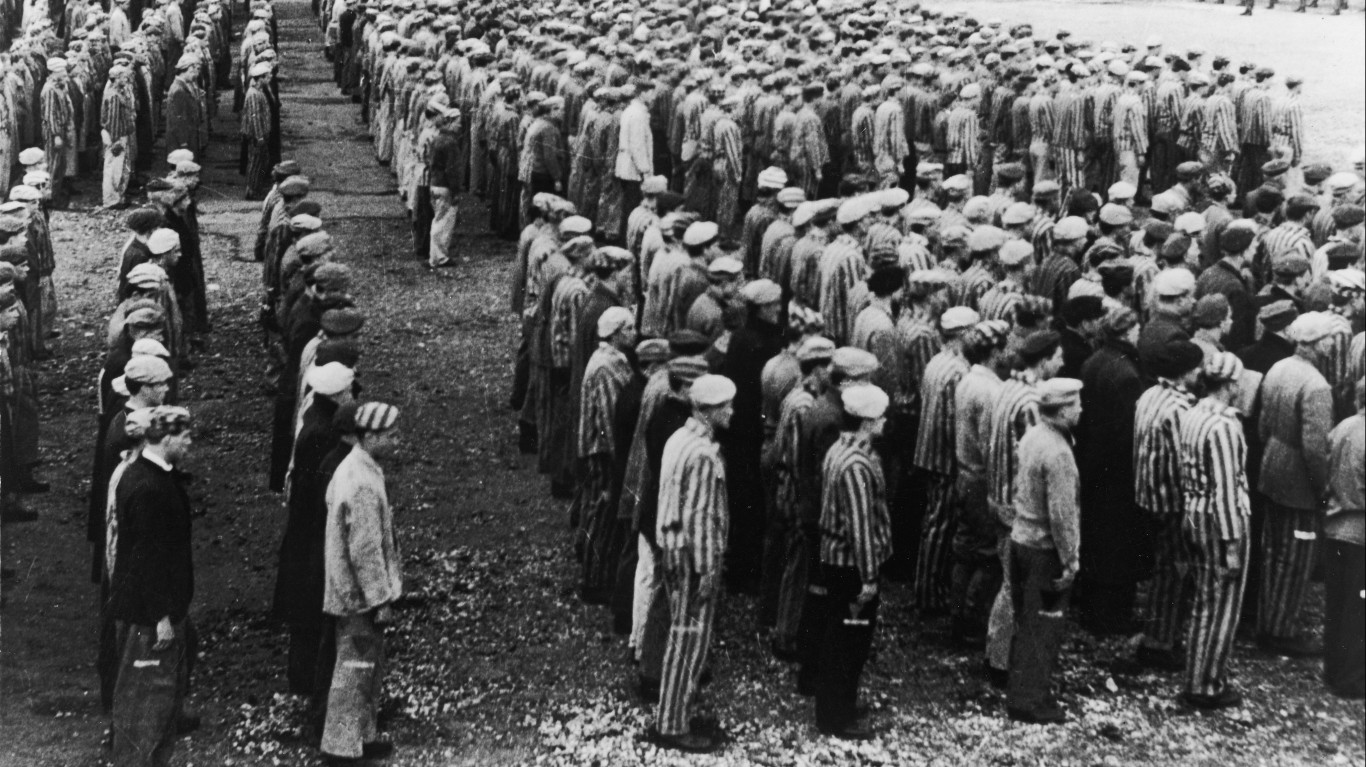
7. Prisoners at Buchenwald
A group of prisoners at the Buchenwald concentration camp, in about 1943.
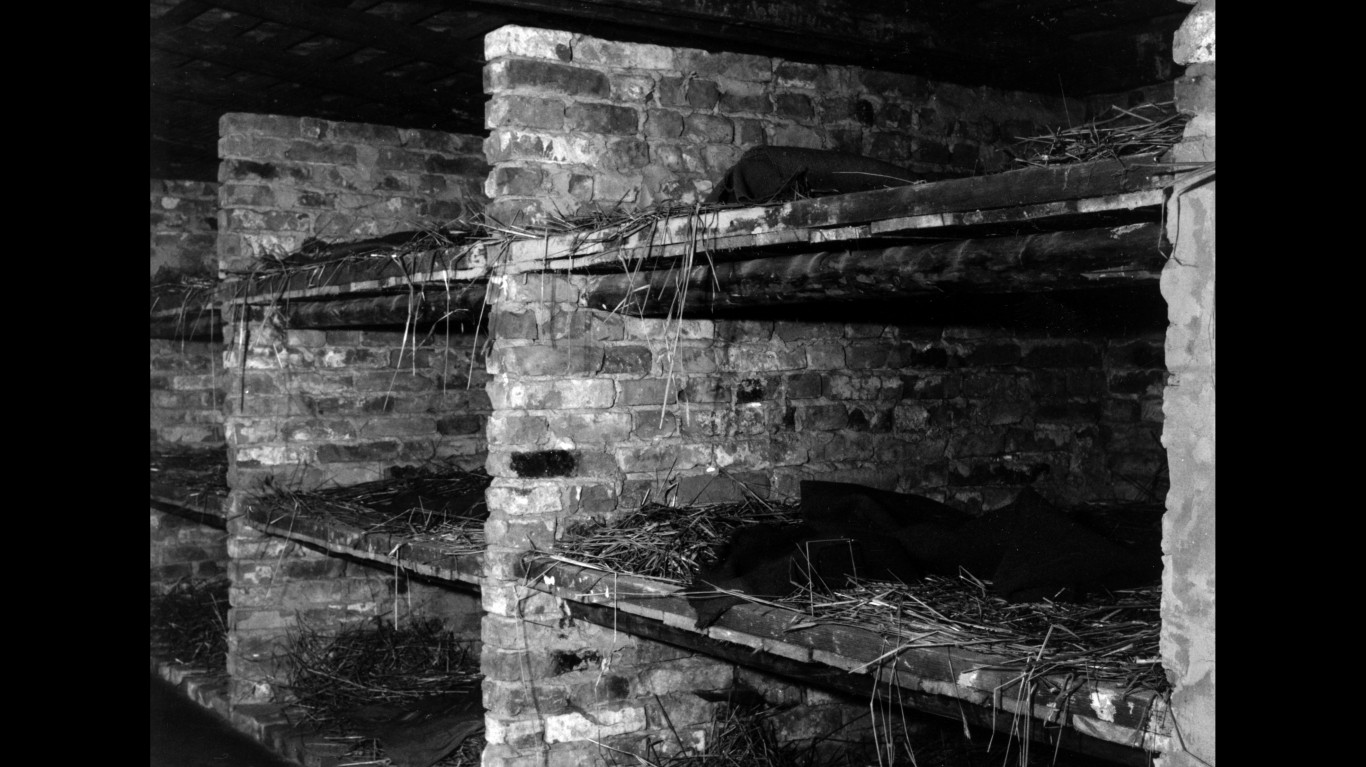
8. Death Camp Beds
Beds at Auschwitz. Sometimes four or five inmates were forced to sleep on a single bunk.
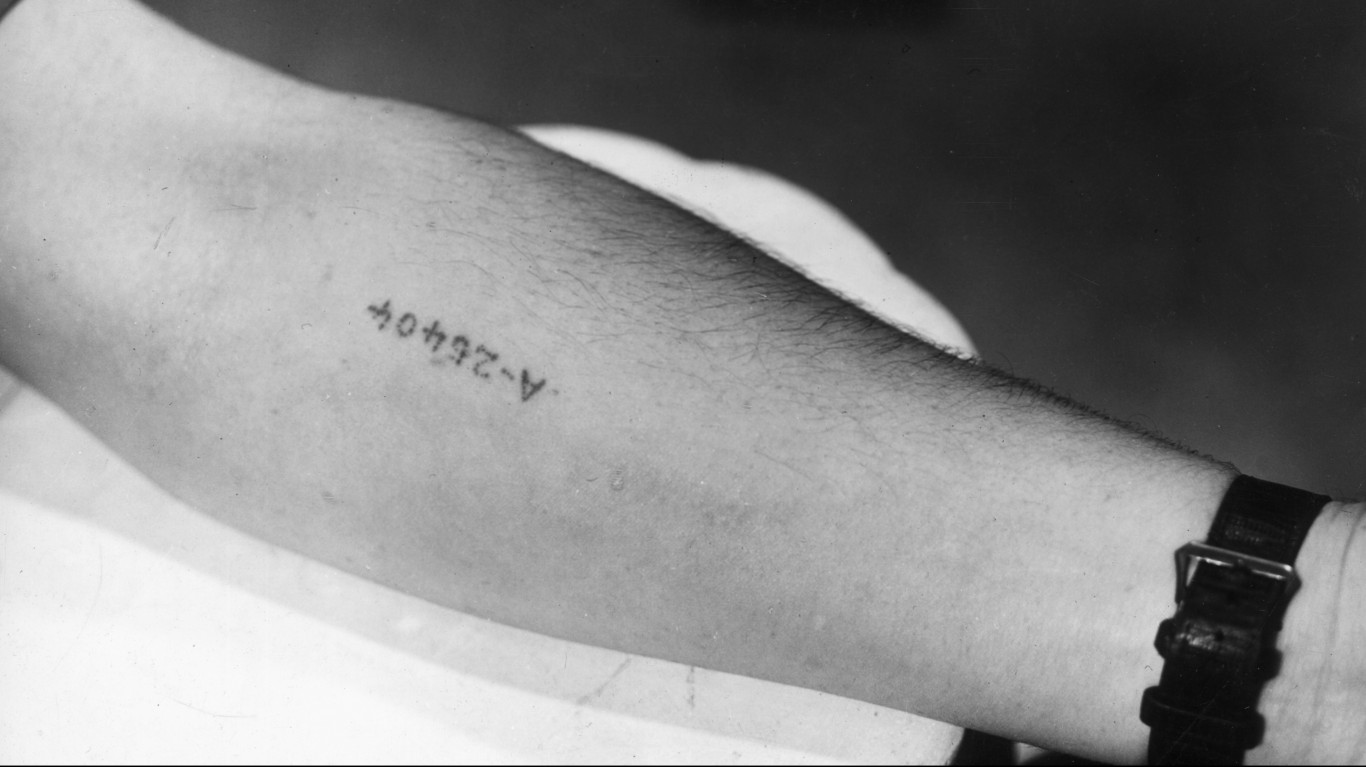
9. Mark of Auschwitz
A former Auschwitz prisoner shows the serial number tattooed on his arm.
[in-text-ad-2]

10. Images of Auschwitz
Personal belongings of Auschwitz prisoners are strewn along the train tracks in the snow outside the camp entrance.
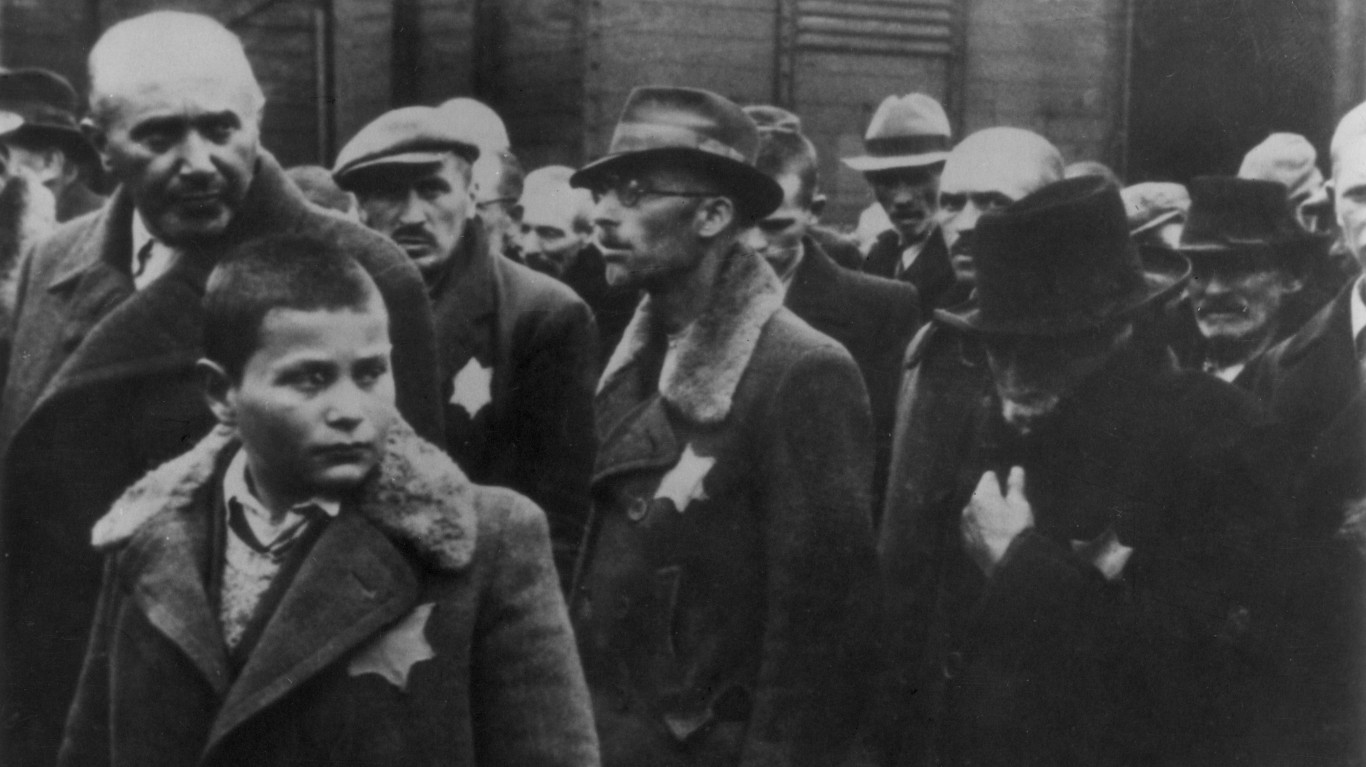
11. Deportees
Deportees with yellow stars sewn to their coats – a sign that they’re Jewish – arrive at Auschwitz.
[in-text-ad]
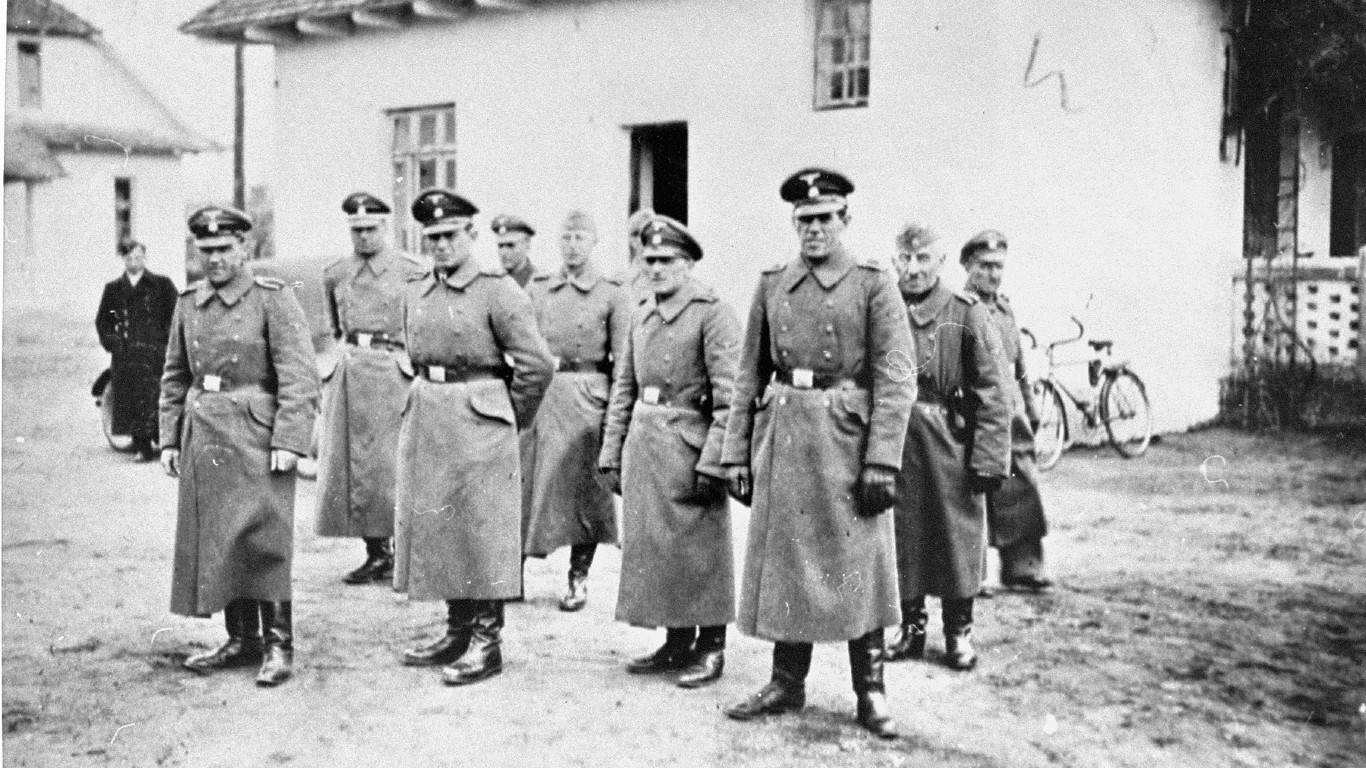
12. An SS Death’s Head Unit at the Bełżec extermination camp
Members of one of the SS Totenkopfverbände, or Death’s Head Units, at Bełżec extermination camp in 1942.
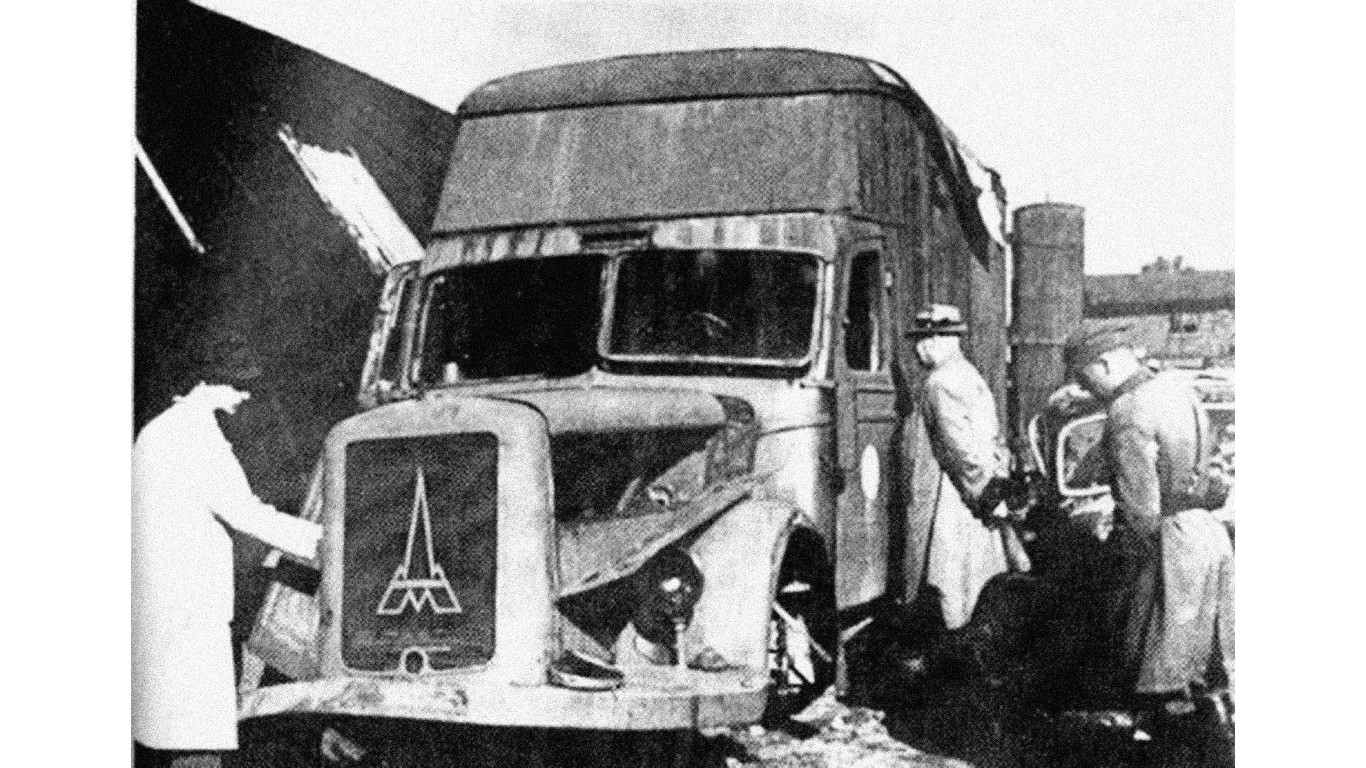
13. A destroyed Magirus-Deutz van
Found near Kolo, near the Chełmno extermination camp in Poland, this is the type of van converted by the Nazis into a mobile gas chamber, with exhaust fumes diverted into a sealed rear compartment filled with prisoners.
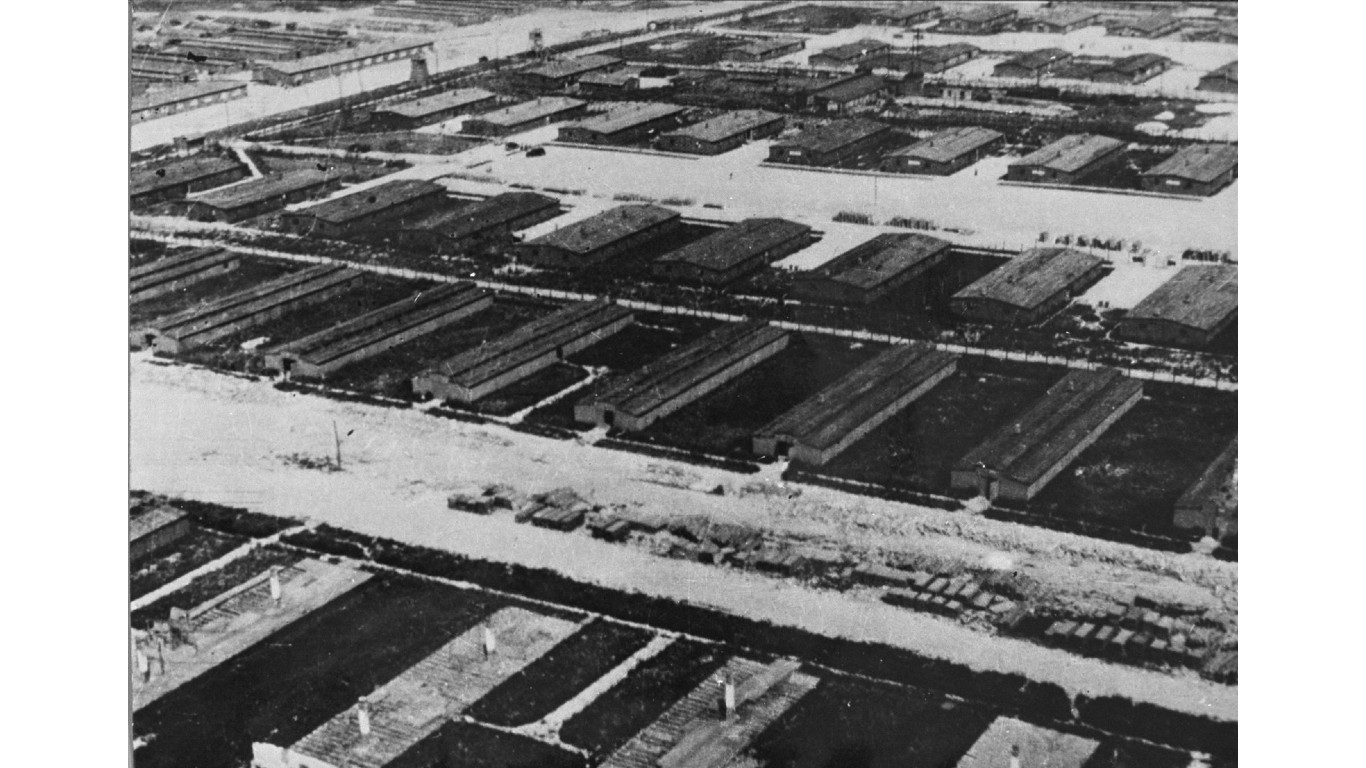
14. Majdanek
A reconnaissance photograph of the Majdanek concentration camp in Poland, taken on June 24, 1944.
[in-text-ad-2]

15. Smoke over Majdanek
A view of smoke rising from the Majdanek concentration camp in Poland.

16. Crematorium at Buchenwald
Human remains, including those of an anti-Nazi German woman, found in the crematorium at Buchenwald when it was liberated in April 1945.
[in-text-ad]

17. Belsen burials
SS troopers load the corpses of inmates of the Belsen concentration camp onto a truck for burial in a common grave.
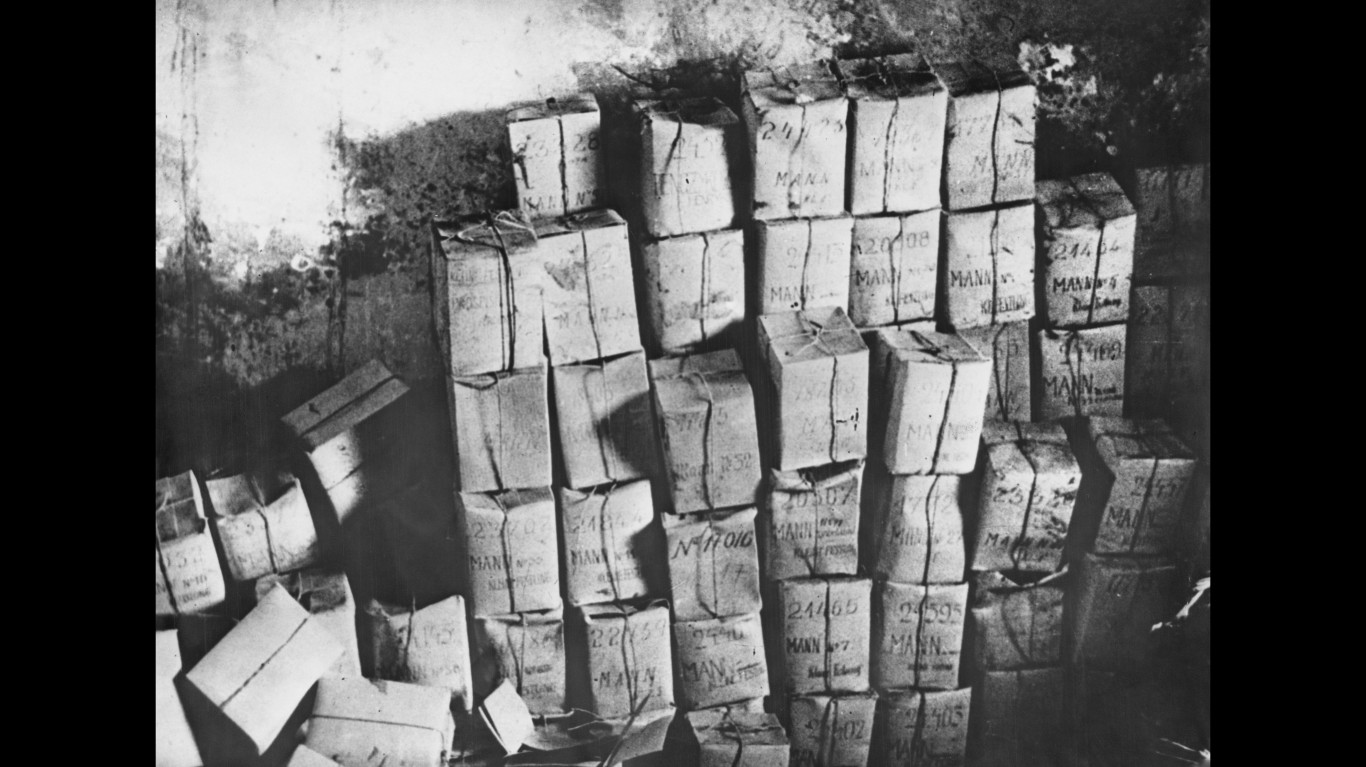
18. Victims’ ashes at Theresienstadt
A stack of box-paper urns containing the ash remains of victims killed at the Theresienstadt Ghetto and extermination camp established by the Nazis near the fortress town of Terezín in Czechoslovakia.
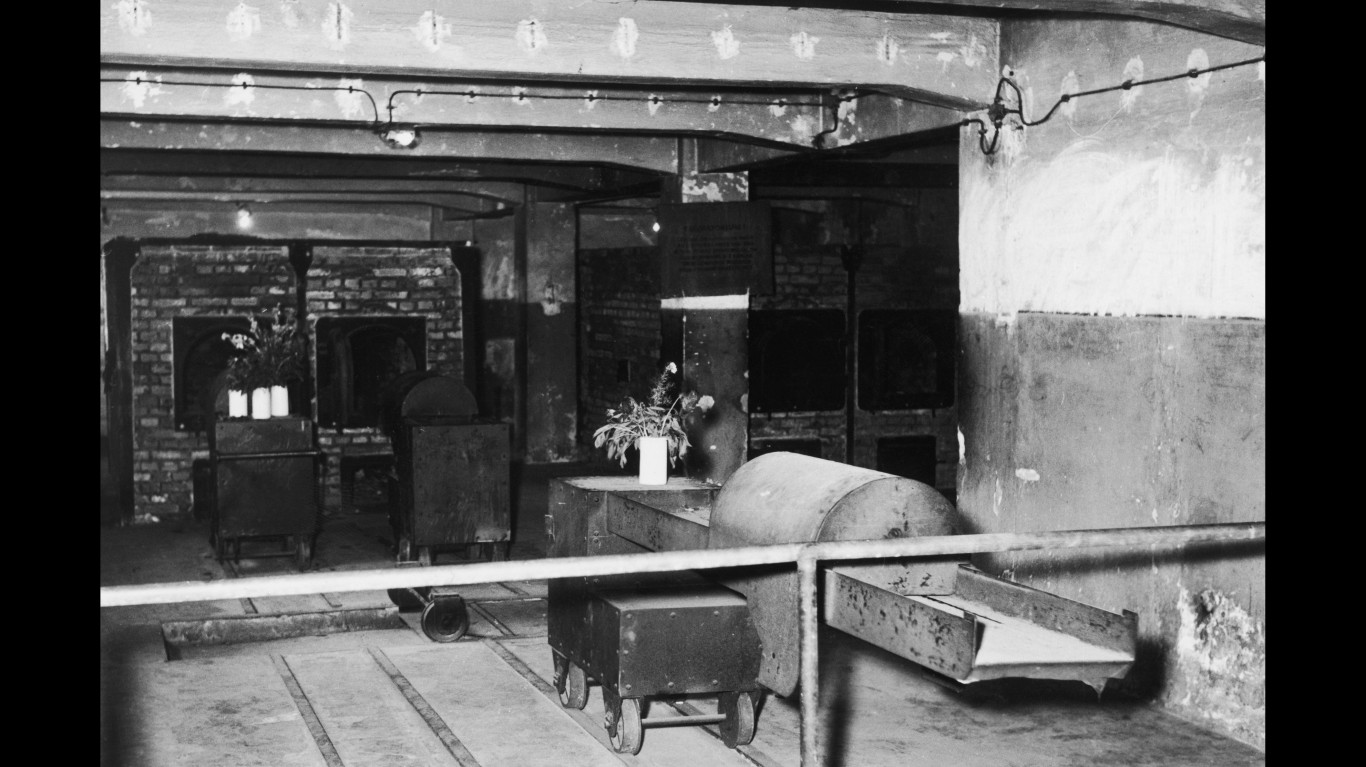
19. Auschwitz crematorium
The first crematorium built at Auschwitz, photographed after the war in 1955.
[in-text-ad-2]
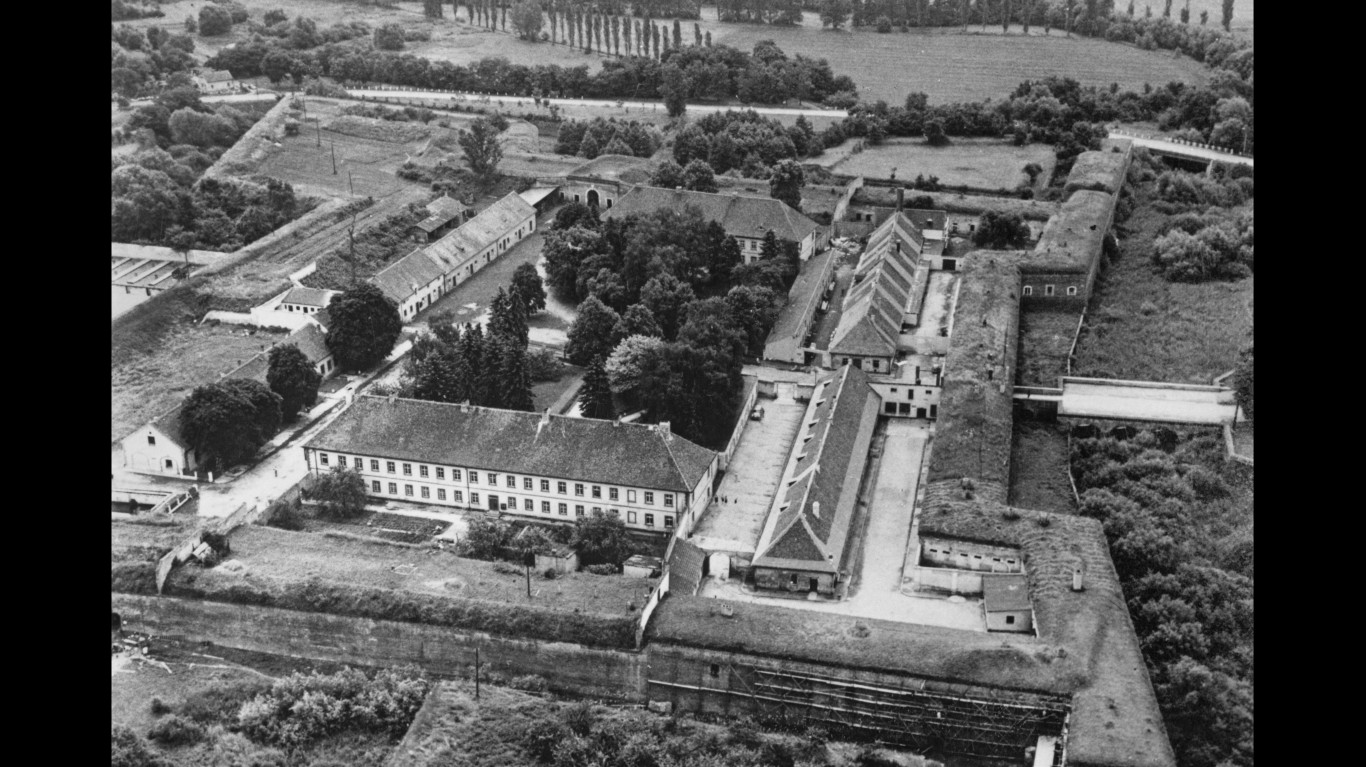
20. Theresienstadt Ghetto
An aerial view of the Theresienstadt Ghetto in Czechoslovakia, established by the Nazis as a stop on the way to extermination camps for some prisoners and as the site of the “final solution” for others.

21. Front gate at Bełżec
The front gate at the Bełżec extermination camp in Poland.
[in-text-ad]

22. Tracks to Treblinka
The railroad tracks leading to Treblinka extermination camp in Poland, where Jews, Poles, Roma, and Soviet POWs were killed.
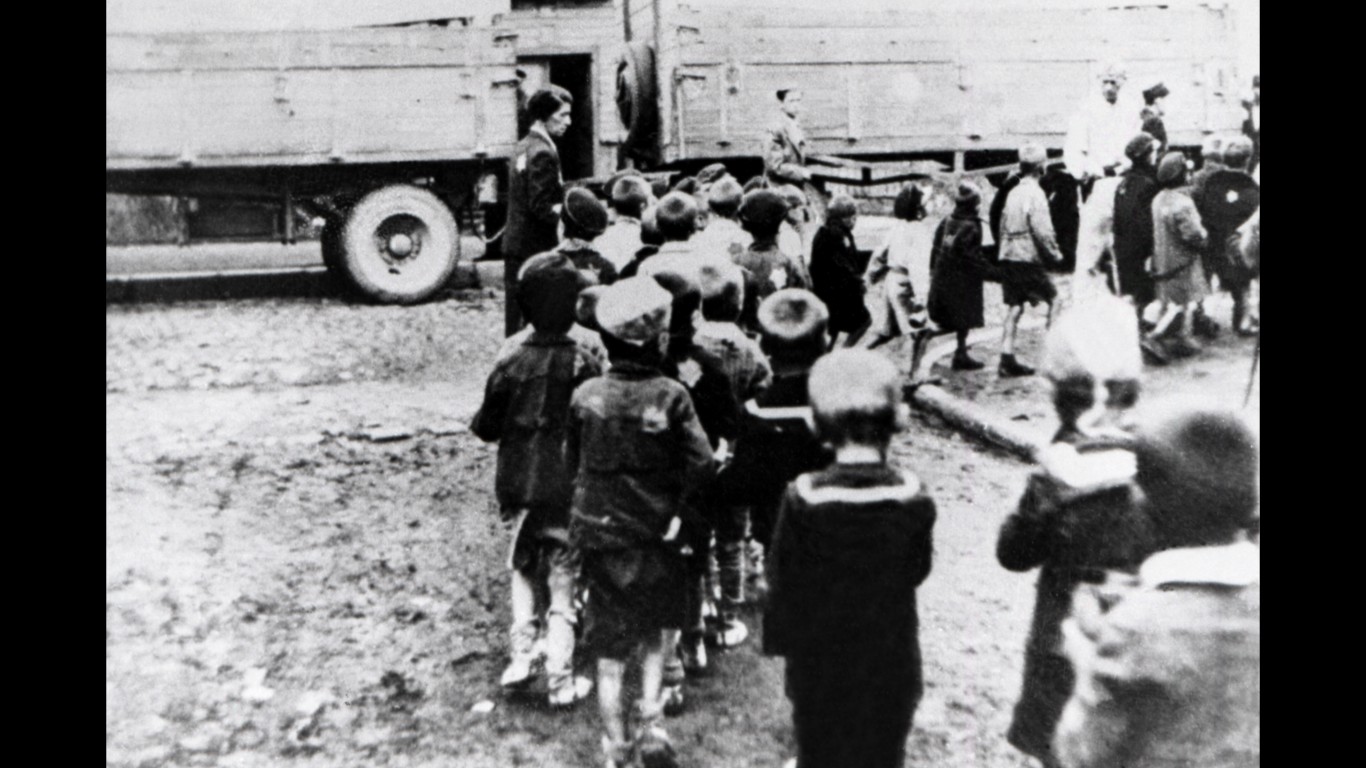
23. From Lodz To Chelmno
The deportation of children from Łódź Ghetto in Poland to the Chełmno extermination camp in Poland, September 1942.
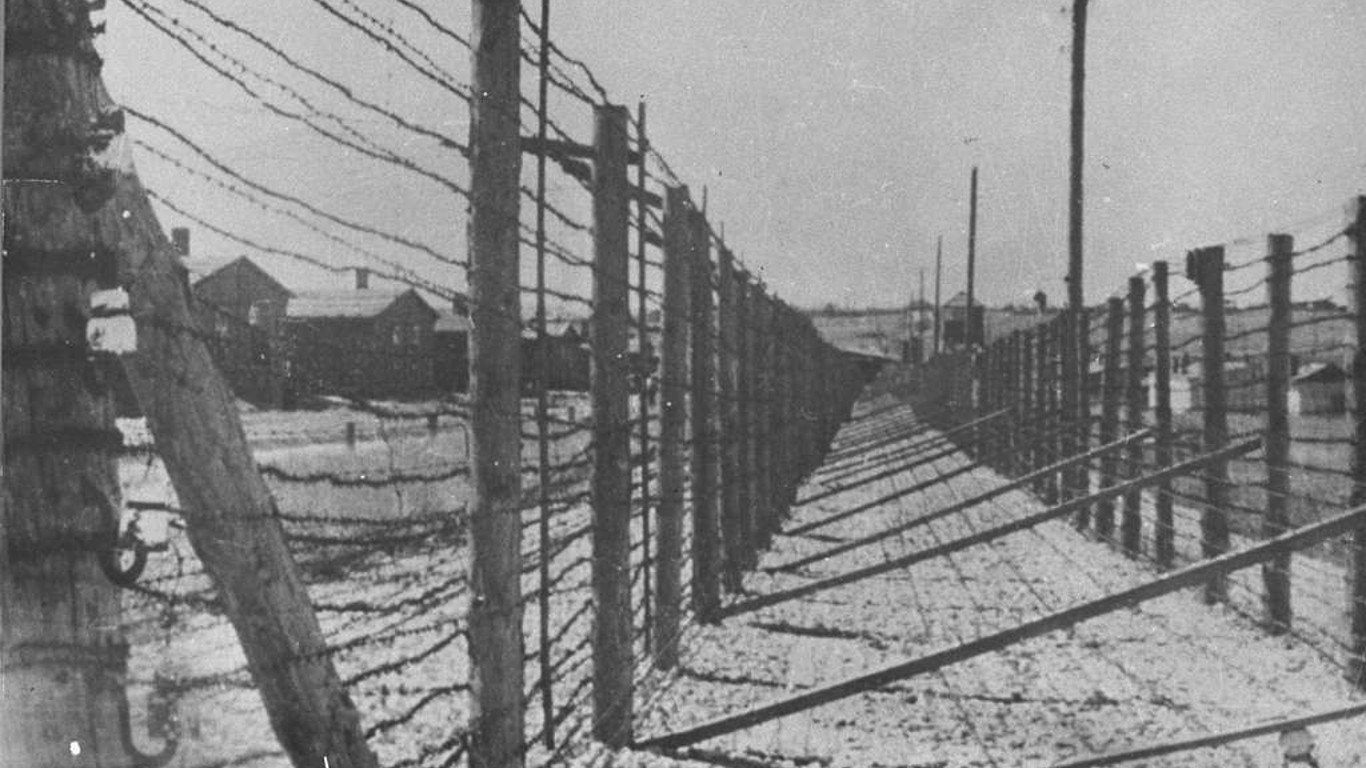
24. Fences around Majdanek
Barbed wire fences enclosing a portion of the Majdanek concentration camp in Poland.
[in-text-ad-2]
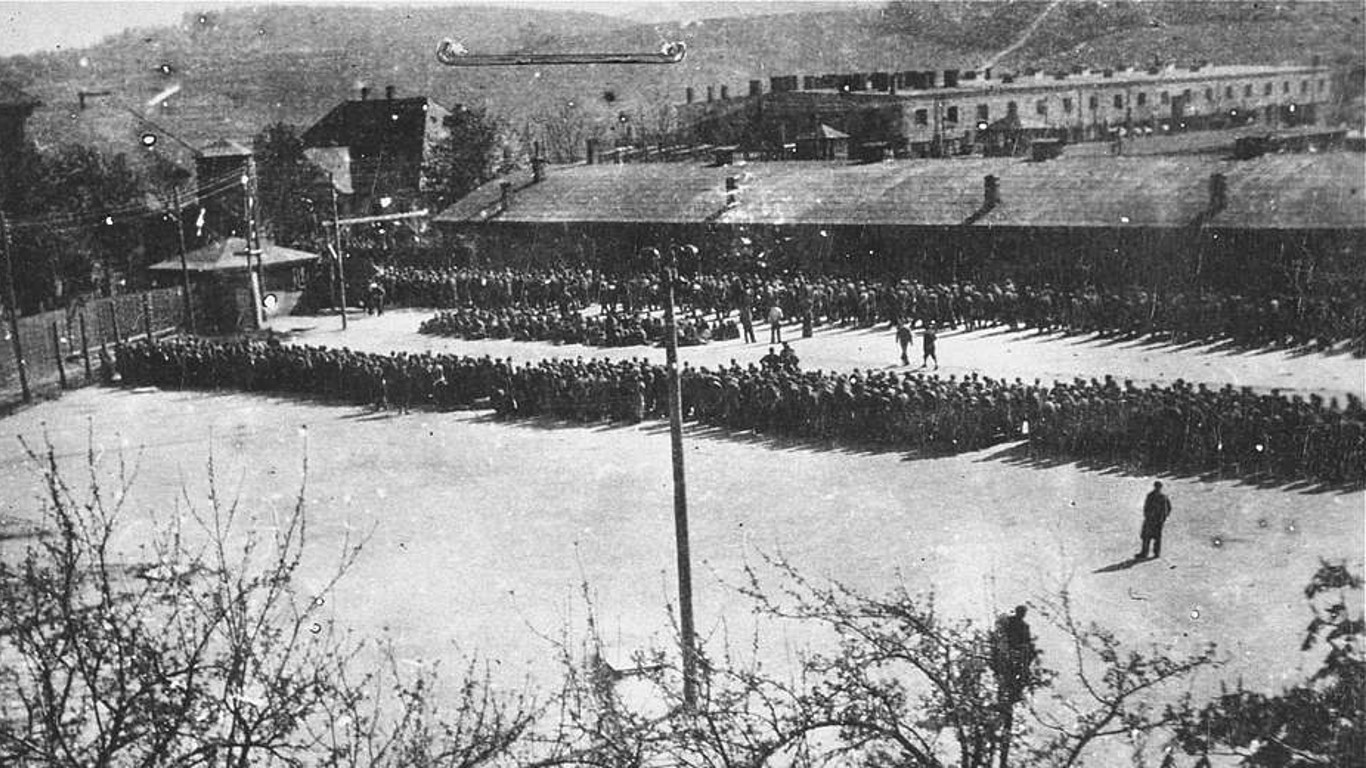
25. Roll call at Melk
Prisoners assembled for roll call at Melk, a subcamp of the Mauthausen concentration camp in Austria, where prisoners from more than 15 countries, about 30% of them Jews, were held.
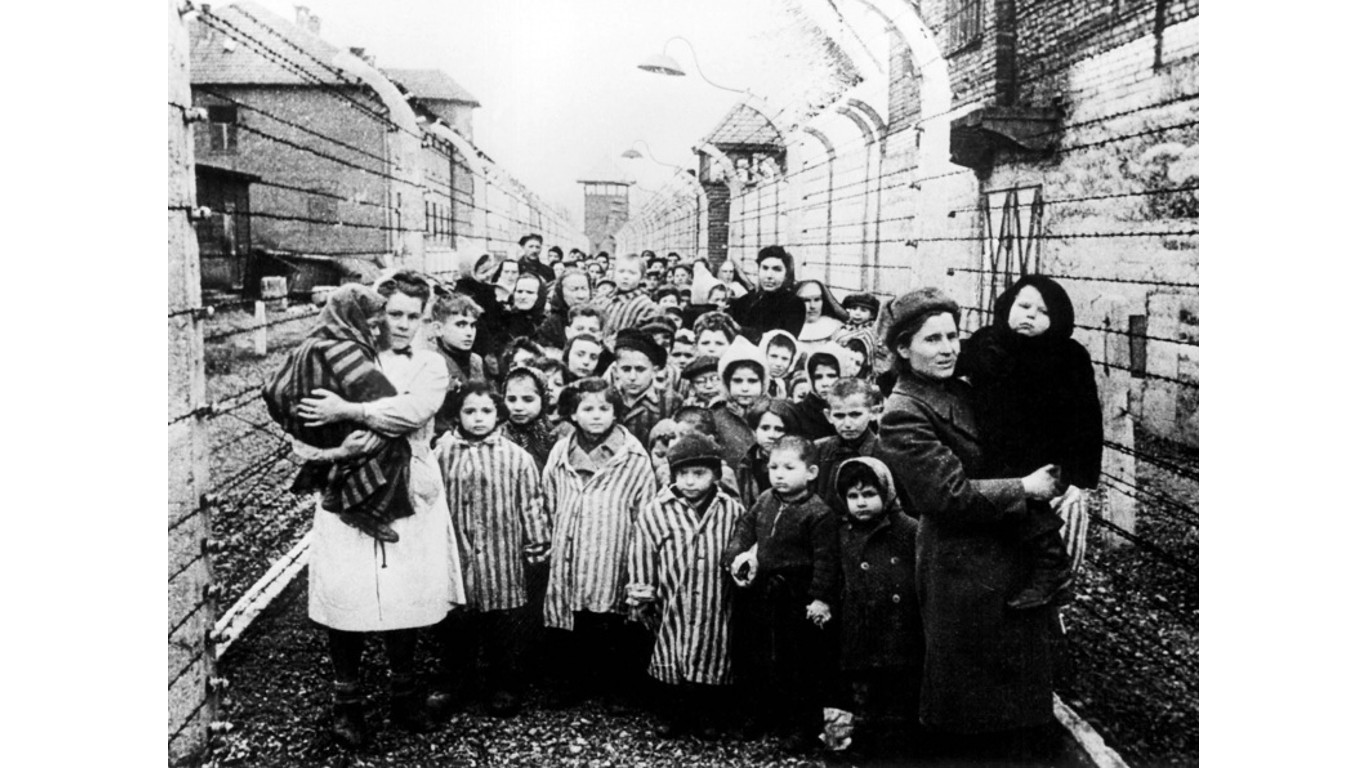
26. Children liberated at Auschwitz
Children liberated at the Auschwitz concentration camp in 1945.
[in-text-ad]

27. Prisoners mixing concrete
Prisoners at the Buchenwald concentration camp in Germany mix concrete at a nearby quarry during forced labor.

28. The Janowska camp orchestra
Jewish musicians at the Janowska concentration camp, forced to form an orchestra for the amusement of the Nazis.

29. Buchenwald forced labor railroad
Prisoners from the Buchenwald concentration camp in forced labor building a 10-kilometer (6.2-mile) track between Weimar-Schöndorf and Buchenwald, which they completed in three months.
[in-text-ad-2]
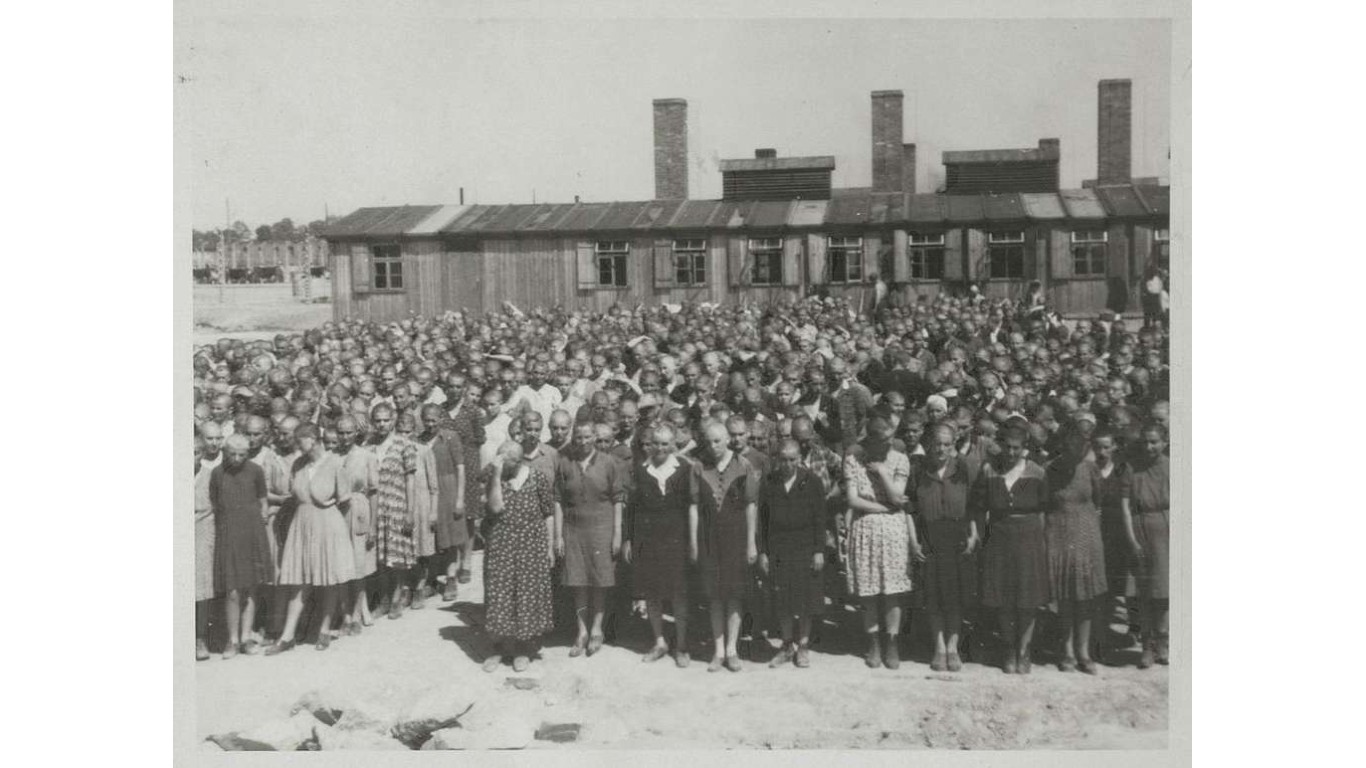
30. Roll call at Birkenau
Female prisoners at Auschwitz II-Birkenau stand for roll call in early 1944.

31. Crematorium of Majdanek after liberation
The crematorium at the Majdanek concentration camp in Poland after its liberation in 1944.
[in-text-ad]
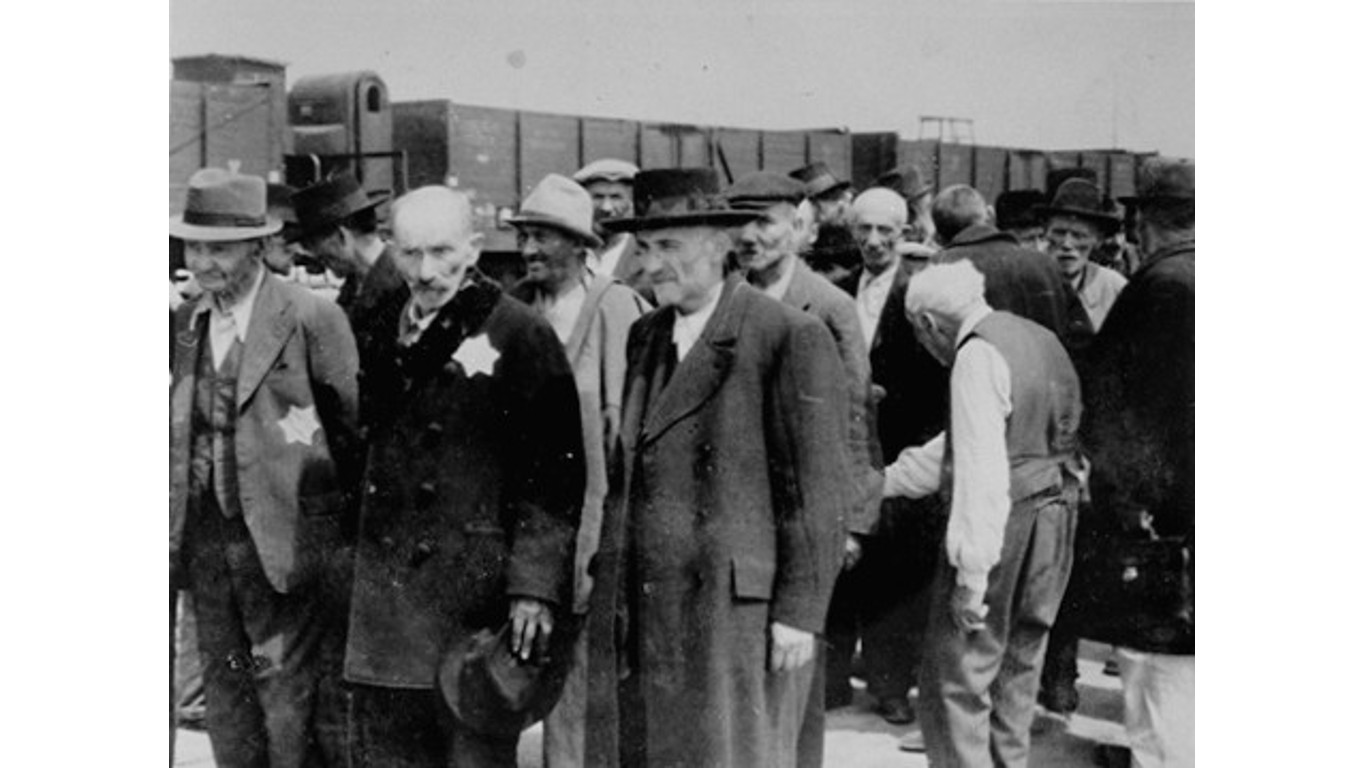
32. Jews await selection in Auschwitz
Jewish prisoners from Subcarpathian Rus, in what is now Ukraine, await selection – for forced labor or extermination – at Auschwitz II-Birkenau.
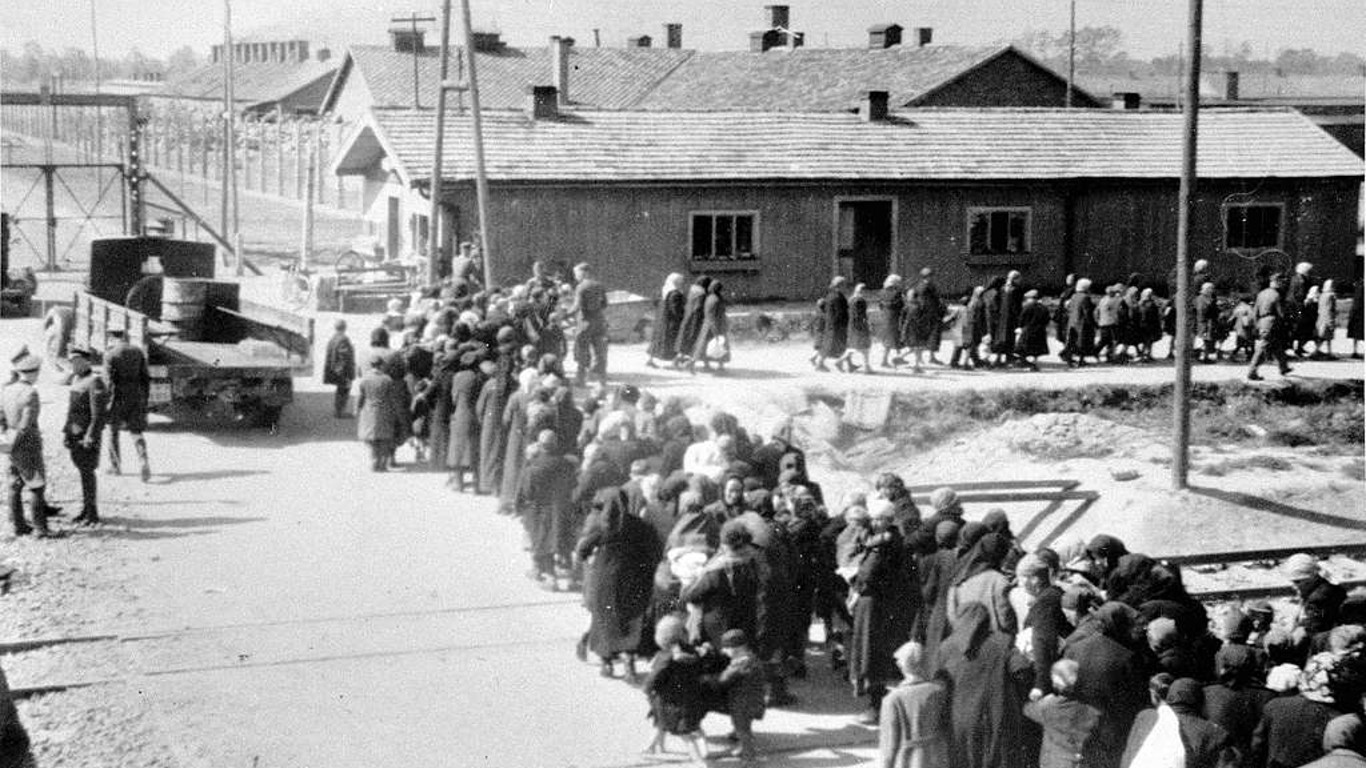
33. Jews at Birkenau walking towards the gas chambers
Hungarian Jews from the Tét ghetto walk towards the gas chambers and crematoria at Auschwitz II-Birkenau in 1944.
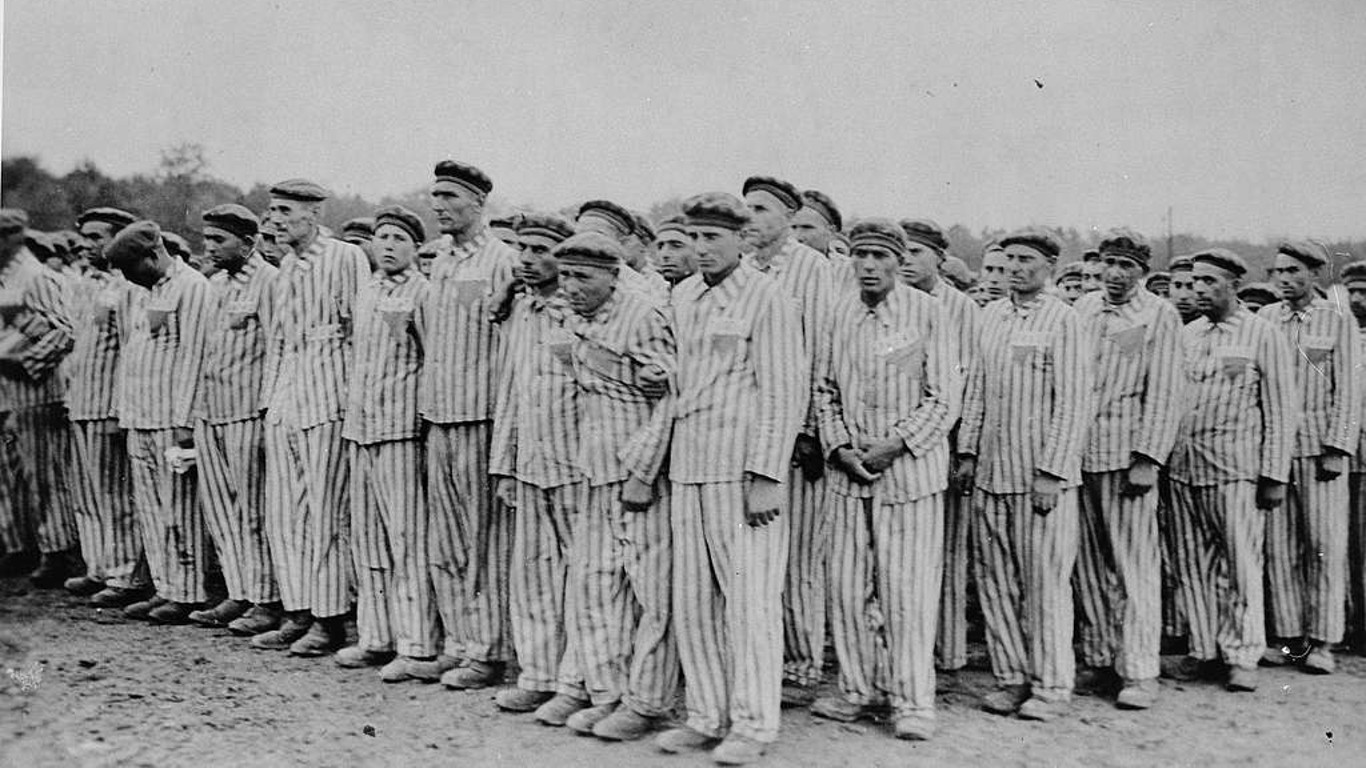
34. Buchenwald roll call 10105
Prisoners at the Buchenwald concentration camp in Germany stand for roll call (refusal to participate was punishable by death).
[in-text-ad-2]

35. Jewish women selected for labor
Jewish women from Subcarpathian Rus in what is now Ukraine, selected for forced labor at Auschwitz II-Birkenau, march towards their barracks after disinfection and head-shaving..
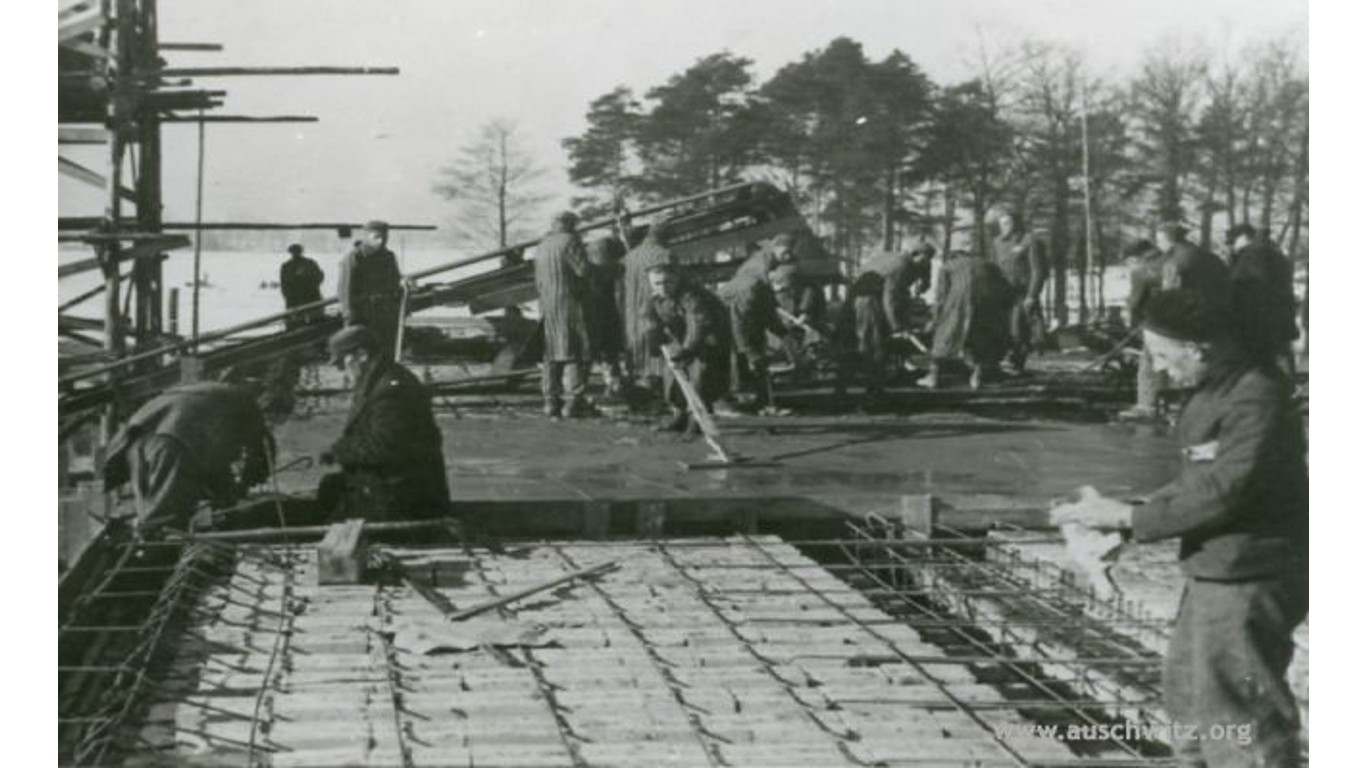
36. Building a gas chamber and crematorium
Jews forced to build a as chamber and crematorium at Auschwitz II-Birkenau in the spring of 1943
[in-text-ad]

37. Construction completed
A gas chamber and crematorium (where, according to calculations by German authorities, 1,440 corpses could be burned every 24 hours) at Auschwitz II-Birkenau after construction was completed in March of 1943.
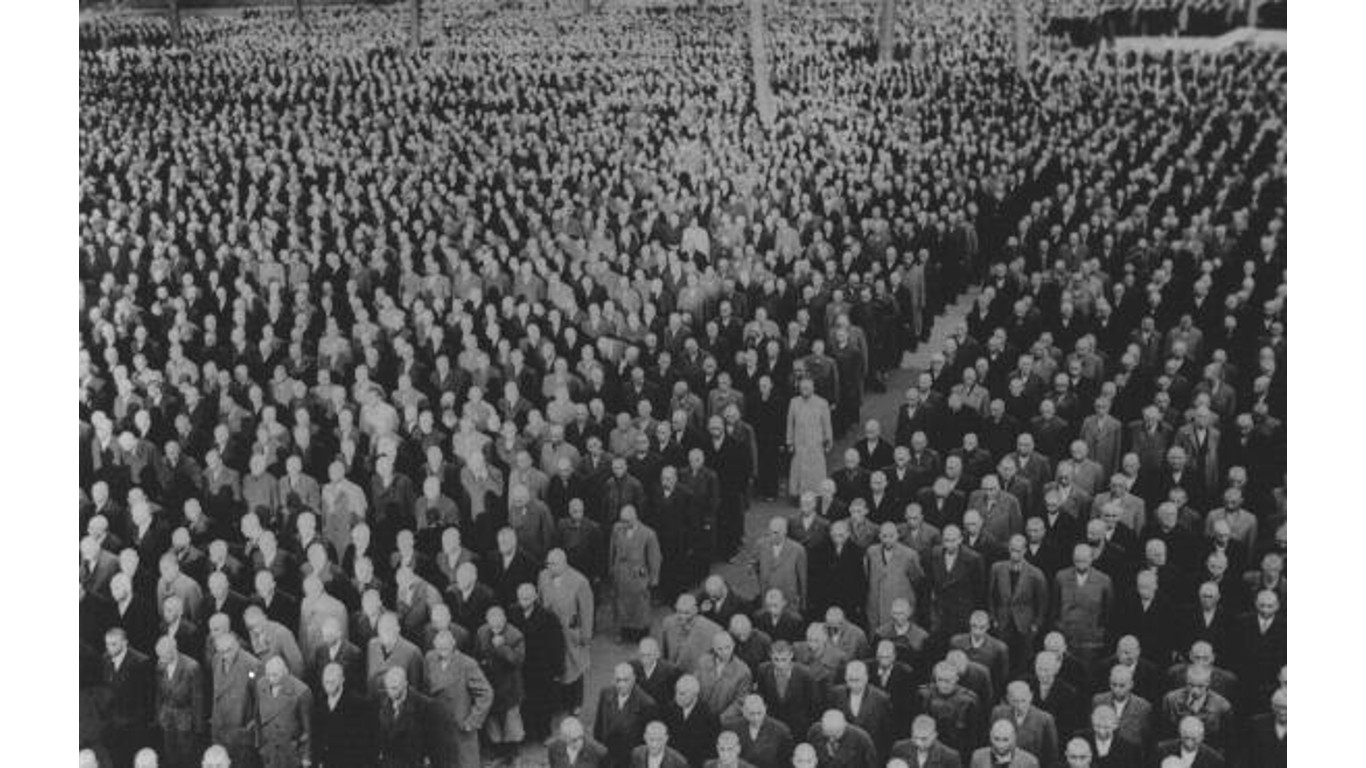
38. Roll call after Kristallnacht
Jews imprisoned at Buchenwald after Kristallnacht – the so-called “Night of Broken Glass” in November 1938, during which Nazis and their sympathizers all over Germany and Austria destroyed Jewish businesses and synagogues and arrested some 30,000 Jews for incarceration.

39. Deportation of Jews
Jews from Zamość in southeastern Poland, known for its Hasidic Jewish community, being deported to Bełżec in April 1942.
Get Ready To Retire (Sponsored)
Start by taking a quick retirement quiz from SmartAsset that will match you with up to 3 financial advisors that serve your area and beyond in 5 minutes, or less.
Each advisor has been vetted by SmartAsset and is held to a fiduciary standard to act in your best interests.
Here’s how it works:
1. Answer SmartAsset advisor match quiz
2. Review your pre-screened matches at your leisure. Check out the advisors’ profiles.
3. Speak with advisors at no cost to you. Have an introductory call on the phone or introduction in person and choose whom to work with in the future
Thank you for reading! Have some feedback for us?
Contact the 24/7 Wall St. editorial team.
 24/7 Wall St.
24/7 Wall St. 24/7 Wall St.
24/7 Wall St.
